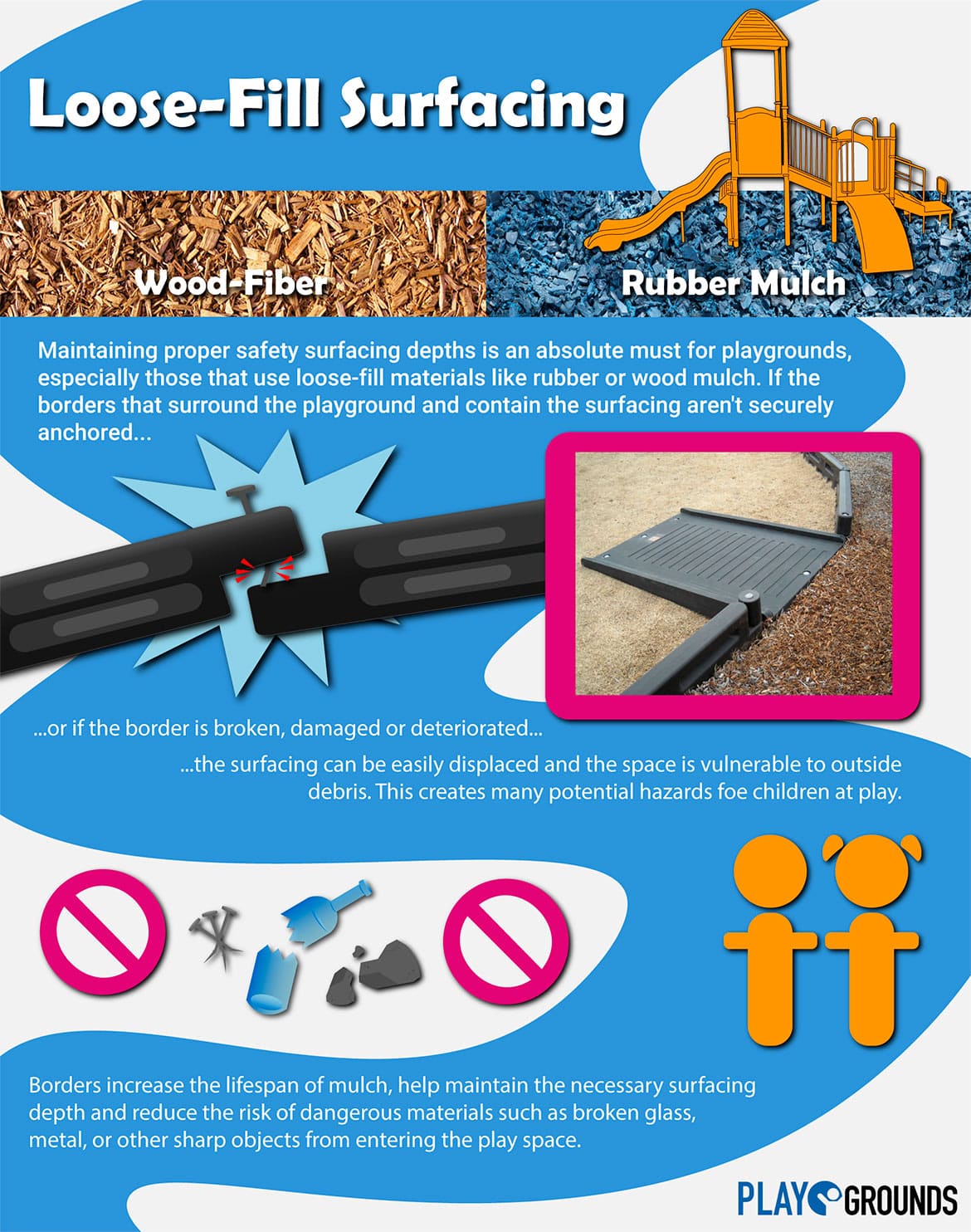What to Expect in a Playground Inspection Report
Authored by certified playground safety inspectors (or CPSIs, for short) playground inspection reports are designed to give you as much relevant information as possible about the safety of your playground, as well as what to do to improve it. Inspection reports are broken down into separate categories, which make it easier to see where your playground could use improvements:

1: Loose-fill surfacing
Ensuring proper surfacing is an absolute must for playgrounds that utilize wood-fiber or rubber mulch. For instance, if the contain borders that surround your playground aren’t securely anchored, or if border material is broken, damaged, or deteriorated, this could lead to rocks and other debris spilling onto your playground, creating potential hazards for children at play. Other criteria include the presence of hazardous materials such as broken glass, metal, or other sharp objects, as well as proper surfacing depth, which helps guard against injuries due to falls.
2: Unitary surfacing
Poured-in-place rubber surfacing is a great, safety-centric option for most playgrounds, and it’s vital to ensure that your unitary surfacing checks all the right boxes. If there are loose or missing tiles present on your playground, or tripping hazards abound, children face a greater risk of injury. Playground inspection reports feature detailed feedback about a wide range of categories, and unitary surfacing is no exception.
3: Benches and Waste Containers
Often taken for granted yet vital to the longevity of outdoor spaces, park benches and outdoor trash cans are crucial to maintain. If the structural integrity of these amenities are compromised, not only will they lose their visual appeal, but eventually their functionality will begin to deteriorate. When a playground safety inspector examines your site amenities, they search for sharp edges or other protrusions that could harm users, broken or damaged materials, and ensure that the amenities are properly anchored into the ground.
4: Composite Structures
Play structures are often the centerpieces of their respective playgrounds, so they’ll usually be the most frequently used pieces of equipment. Playground inspectors pay special attention to these composite structures, examining them closely for a variety of potential safety hazards. There’s no shortage of safety concerns that CPSIs look for when inspecting composite play structures, including: uncapped pipe ends, missing or badly-worn fasteners, exposed footers, and more.
5: Swing Frame, Assembly, and Seats
Swing sets are another common structure on playgrounds across the nation; they’re relatively easy for children to use, and provide tons of fun. Swing sets feature several moving parts, and CPSIs must hone in on these parts to ensure they’re in good working condition. If wear and tear is present on any of a swing set’s S-hooks, chain links, shackles, or other connectors, this could bode poorly for the future safety of children who use the swings. Other areas of concern for CPSIs include ensuring the structural integrity of a swing set’s mountings and foundation, as well as proper surfacing in the immediate area of the swing set, particularly where children are likely to land after hopping off the swings.
This list should give you a solid idea of what CPSIs look for when conducting a playground inspection. Your playground inspection report will feature a wide range of criteria that your playground either satisfies or could use improvement on, and your CPSI will offer their own feedback to help guide you through the playground safety improvement process.